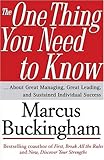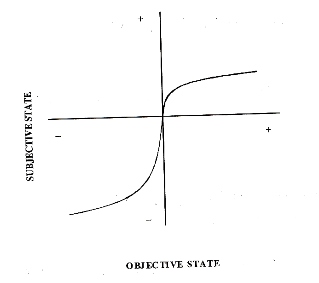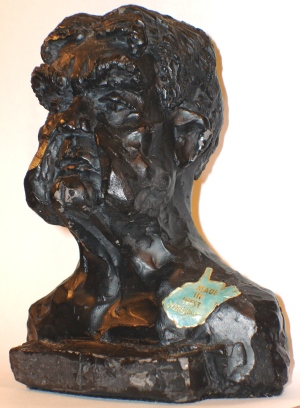My earlier article on Motivation and Self-Determination Theory has been my most-accessed article so far. That gave me the idea of posting the following dialogue that occurred in a comment exchange on Positive Psychology News Daily. Sometimes we have some interesting discussions there, which do not get much exposure and can be hard to find later. I think it might be easier to retrieve from here.
Question from Jeff: If you are game, here is a scenario for you. You have a friend who is diabetic. The doctor has informed this friend she will lose toes and fingers if she doesn’t take better care of her diabetes by watching her diet, monitoring her blood, etc. She wants to keep doing what she’s been doing all her life: drinking, eating sweets, having fun at parties and not being hassled by pricking her finger. She’s amotivated to change her current practices but recognizes that, yes, she’ll probably go blind and die prematurely without changing…so in her head, there is more than amotivation, but her heart isn’t in it. I’d love to hear a hypothetical solution to this problem.

Blood Glucose Meter - Blood sugar slightly high
Answer: Your scenario was like Brer Rabbit begging to be thrown in the briar patch (”I was born and bred in the briar patch!”). I’ve been a Type 1 diabetic myself for 29 years. I’ve been in various levels of motivation over the years, and I recognize the friend you describe.
Competence really does play into the picture. Managing blood sugars is hard. It’s a constant, day-by-day balancing act, and perfect performance is impossible. There are 8 variables (at least) that contribute to each blood sugar reading, and I only have control over some of them. So learning to feel competent in spite of numerous small “failures” is a very important step. That’s a matter of interpretation — of understanding what is “good enough”, of knowing that small failures are inevitable but one can influence trends, and of believing that one’s own efforts make a beneficial difference. I’ve found managing blood sugars very humbling because I’m not used to so many small failures. It’s hard to keep my eyes on the trends. By the way, this connects to vicarious mastery in self-efficacy research — that is, seeing people like me, having the same small failures that I have, have long and healthy lives is motivating because it helps me believe I can too.
Second, many people are motivated by relatedness. I’ve read numerous articles in Diabetes Forecast where newly diagnosed diabetics say things like, “I want to be alive and well to see my child graduate from high school.” (This might be weaker for younger people in the “party animal” phase.) Marzilli (no date) has explored different effects of social support on eating behavior of people with diabetes.

Insulin Pump
Third, autonomy does play into the picture. Young people who feel like their parents are breathing down their necks can be very stubborn about not taking care of themselves. People whose doctors give lots of orders and don’t acknowledge differences in life styles can undermine motivation.
Now, do these three psychological needs cover all the ground? Are they necessary AND sufficient? I don’t really know the answer to that and would have to do considerably more reading to figure it out.
For your hypothetical friend, this gives some structure for exploration. Does she value good health? Does she feel that it is within her power to get “good enough” results? Are there people she wants to please or to whom her health makes a major difference? Does she feel like she is in control — that others interfere only when necessary?
Self-Determination Theory is a theory — which means that it’s a hypothetical explanation that the theorists have created to fit previous observations and structured so that it can be tested empirically. Yes there has been considerable empirical research addressing self-determination theory. Ryan and Deci have been evolving and testing it for 30 years. There’s an SDT site with information about their research, including some questionnaires for assessing SDT concepts: http://www.psych.rochester.edu/SDT/ In fact, their publication list includes a book related to the scenario you bring up:
Marzilli, G. (no date). The Effects of Social Support on Eating Behavior of People with Diabetes. Research paper at WIlliams College.
Sheldon, K. M., Williams, G. C., & Joiner, T. (2003). Self-determination theory in the clinic: Motivating physical and mental health. New Haven, CT: Yale University Press.
Images:
Blood Glucose Meter from http://www.nativeremedies.com/images/design/ailmentPhotoHypoglycemia.jpg
 Bryant, F. B. & Veroff, J. (2007). Savoring: A New Model of Positive Experience. Mahwah, NJ: Lawrence Erlbaum.
Bryant, F. B. & Veroff, J. (2007). Savoring: A New Model of Positive Experience. Mahwah, NJ: Lawrence Erlbaum.









 The One Thing You Need to Know
The One Thing You Need to Know  My husband is a very organized person. He has a system for making to-do lists that includes consulting several master lists — one for annual events like eye doctor appointments, one for monthly events, one for weekly events, and one for ongoing projects. Once he has made a list, he doesn’t like to do something that is not on the list unless it is of overarching importance. When I first knew him, I sometimes found it very annoying if I had an idea for a project, and he said, “It’s not on the list.”
My husband is a very organized person. He has a system for making to-do lists that includes consulting several master lists — one for annual events like eye doctor appointments, one for monthly events, one for weekly events, and one for ongoing projects. Once he has made a list, he doesn’t like to do something that is not on the list unless it is of overarching importance. When I first knew him, I sometimes found it very annoying if I had an idea for a project, and he said, “It’s not on the list.” 









.jpg)
